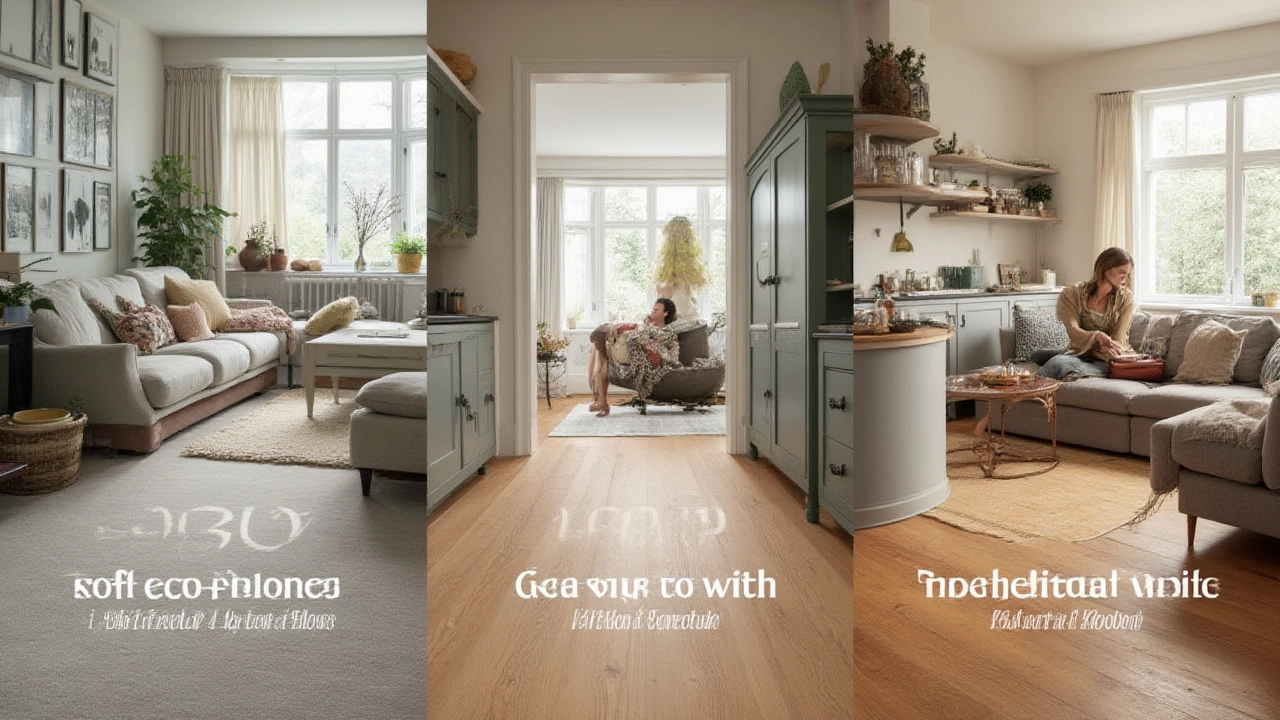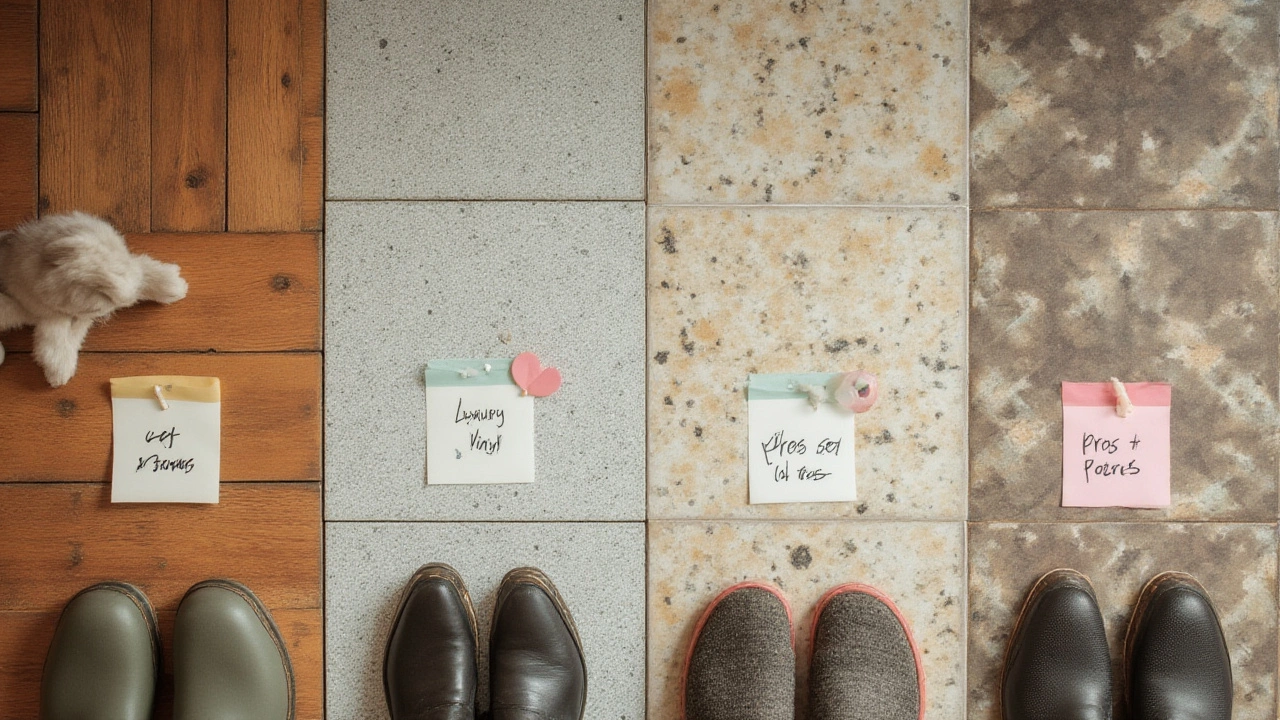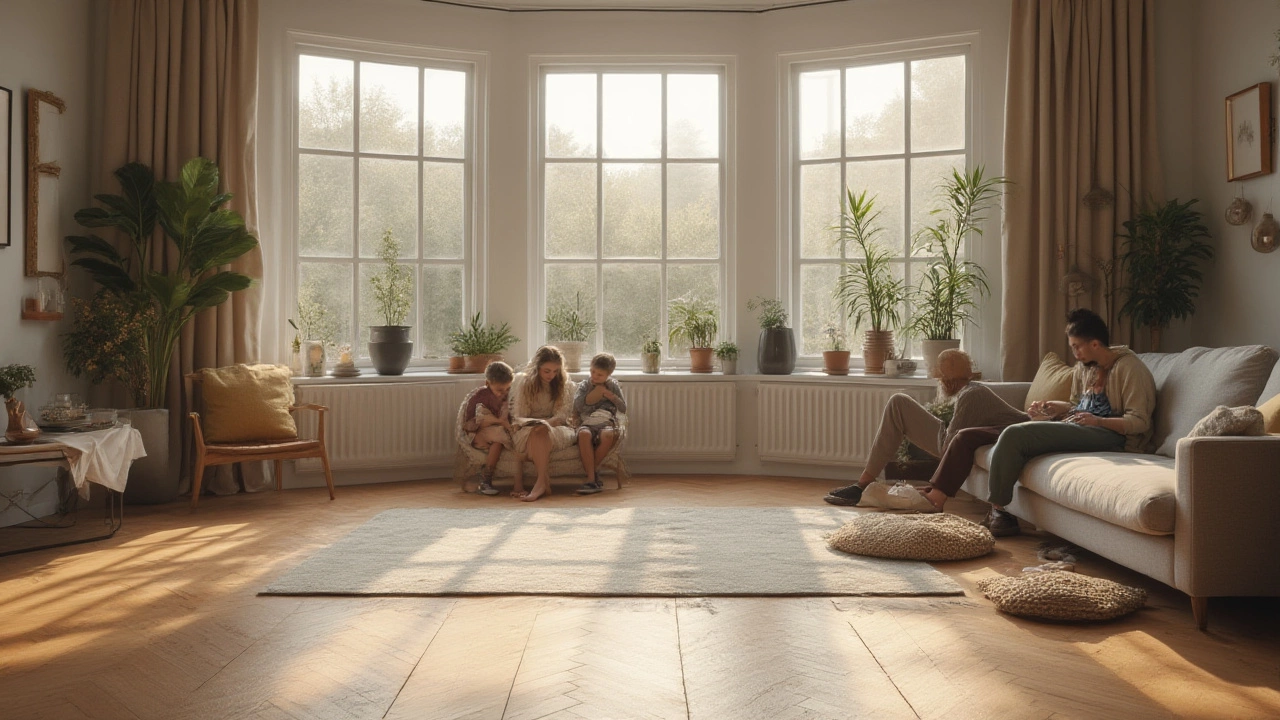If you walked through a dozen homes this week, you’d spot a clear pattern on the ground. People are no longer just picking whatever’s on sale at the hardware store—they’re getting picky. The days of orange shag carpets and old-school tiles are fading in the rearview mirror. So what’s leading the charge in 2025? The answer isn’t just about looks or price. There’s more at play—comfort, maintenance, wow-factor, and yes, even how your dog’s paws clack along the hall.
Why Homeowners Are Choosing Luxury Vinyl Plank (LVP) Flooring
Even five years ago, if you’d asked someone to picture “vinyl flooring,” most folks would crinkle their noses and imagine something shiny and cheap-looking. But popular flooring in 2025 has a new poster child: luxury vinyl plank, known as LVP. It’s not flashy or fussy—just the hard-working crossover that has quietly taken over every room from entryways to living rooms, and yes, even some stylish bathrooms.
Here’s what’s wild: according to a 2024 industry survey by the National Wood Flooring Association, LVP installations jumped by nearly 40% over just three years. That’s not a typo. In a recent survey by FlooringInc, over 50% of new installations in suburban single homes picked LVP over tile, laminate, or carpet. Why? First—water resistance. People are tired of worrying about spills soaking into the subfloor. LVP is built like a tank for moisture, and it shrugs off wine, muddy boots, and frantic kid art sessions. This makes it the first choice for kitchens, basements, and anywhere else life happens.
If you’re a DIY fan, there’s another reason: LVP has click-and-lock installation that doesn’t make your back ache or your wallet cry. Busy families and pet owners gravitate toward it because it handles scratches from claws and toys better than many traditional hardwoods. And if your home style leans modern farmhouse or cozy cottage, there’s a finish that fits. Wood-look and stone-look LVP are so realistic, friends will do a double-take before they realize it’s not the real thing.
Cost has a lot to do with this trend. While solid hardwood still rules Instagram, its price tag and upkeep make LVP look even more tempting. The sticker shock is real—a mid-range LVP comes in at $2-4 per square foot installed, while most hardwood starts at $7. For a 1,500-square-foot home? That’s not pocket change. LVP makes upgrading an entire home’s floors actually doable for most folks without racking up debt.
Maintenance and cleaning need almost zero effort. No special sprays, no gentle babying like you’d see with high-end wood. Just vacuum, mop, and get on with life. For people (like my wife Sophia) who care about indoor air quality and allergies, LVP’s non-porous surface is a bonus. It doesn’t trap dust mites or pollen the way some old carpets do.
LVP is leading, yes, but it’s not perfect. The boards can dent under heavy furniture, and if your subfloor isn’t totally flat, you might see gaps or edges pop up over time. It’s not the best pick for people wanting a “forever home” feel with natural materials. But as a practical, good-looking flooring that survives chaos and spills? That’s why you see it everywhere right now.

Runners-Up: Popular Alternatives in Flooring for Every Room
LVP might be the go-to for many, but it’s not a one-size-fits-all answer. Some folks still have strong opinions on other styles, and there are good reasons for their loyalty. Let’s talk hardwood, tile, laminate, and carpet—the classics, still holding their own in the right homes.
Hardwood floors have always had that “wow” factor. There’s just something about the creak underfoot, the warm glow in afternoon sunlight, that makes a space feel lived-in. Latest stats from the National Association of Home Builders show 80% of buyers see hardwood in living areas as a huge plus. The trouble? Price, maintenance, and water. Hardwood hates wet feet and muddy paws. But engineered hardwood—a thinner real wood veneer over a composite base—offers a smart compromise. It’s a bit cheaper, installs faster, and resists humidity swings better than traditional planks. Oak still leads for its durability and timeless color.
Ceramic and porcelain tile remain unbeatable for bathrooms, entryways, and sunny southern homes where cool floors are a win. Tile handles floods and pet messes with zero drama, and you’ve got more color and size choices than ever. A stat from Floor Covering Weekly says tile sales actually climbed 8% last year, mostly driven by new builds and luxury remodels. Just expect chilly toes in winter unless you invest in radiant heating systems.
Laminate used to be a top contender, but these days, it’s losing ground to LVP due to limited water resistance and a tendency to delaminate over time. Still, it’s cheaper than hardwood and comes in styles from rustic barnboard to slick grays. If you’re flipping houses or updating a kid’s bedroom, laminate can still be a smart move.
And yes—carpet still has a die-hard fan base. It’s the softest landing for toddlers learning to walk and the most forgiving for folks who love lounging on the floor. Plush, stain-resistant options and new “eco-carpets” made from recycled bottles are making a niche comeback. But most buyers want carpet now only in bedrooms or basements. It’s all about targeted comfort instead of blanketing the whole house.
Check out how the stats stack up in this table:
| Flooring Type | Average Cost/Sq Ft Installed (USD) | Top Rooms | Bonus Feature |
|---|---|---|---|
| Luxury Vinyl Plank (LVP) | $2 – $4 | Kitchens, Living Rooms, Basements | Water-resistant, DIY-friendly |
| Hardwood (Solid/Engineered) | $7 – $12 | Living Rooms, Dining Rooms | Timeless, increases home value |
| Ceramic/Porcelain Tile | $5 – $10 | Bathrooms, Entryways | Waterproof, huge style variety |
| Laminate | $1.50 – $3.50 | Bedrooms, Hallways | Easy on budget, many styles |
| Carpet | $2 – $5 | Bedrooms, Basements | Soft, warm, less allergen-friendly |
The bottom line? Each flooring type has a loyal fanbase. But LVP is dominating for its combo of appearance, price, toughness, and versatility, especially for families who want that sweet spot between “looks good” and “lives well.”

Smart Tips to Choose Flooring That Fits Your Real Life
Choosing the right floor is more than picking what’s trendy. It’s about knowing yourself, your household, and what you’ll love staring at (and standing on) every day. First tip: be brutally honest about your lifestyle. Do you have big dogs? Sloppy cooks? Kids with crayons? Go for something that forgives accidents. This is where LVP shines—it laughs off spills and muddy prints.
Don’t just consider color and style. Think about the texture—do you like the warm touch of carpet first thing in the morning, or the sleek look of hardwood? Do you want something durable enough for rollerblades in the hallway, or do you mostly host dinner parties where shoes come off at the door?
Light floors look bigger and reflect more sunshine, but they make dirt and dust show up faster. Dark floors feel rich and cozy but can highlight every scratch and crumb—driving neat freaks nuts. My spouse, Sophia, swears by a medium-tone LVP that hides footprints better than anything we’ve tried. Glare can be an issue too, especially under artificial lights—a matte finish usually solves it.
Allergies are another dealbreaker. LVP and tile don’t trap allergens. Carpets can—unless you go with a hypoallergenic, low-pile version. If a family member wrestles with hay fever or asthma, steer toward hard, washable surfaces.
Another smart move? Ask for real samples and toss them on your floor. Look at them in morning and evening light. If you have pets, let them walk on the samples to see how easily they scratch. Some manufacturers even offer free samples you can order online, which beats staring at paint-chip-sized swatches in fluorescent-lit warehouse aisles.
Don’t skip the subfloor check. If your foundation isn’t dead level or you live in an older home, spring for an underlayment that smooths out bumps. This prevents clicking and popping sounds over time, extends the floor’s life, and can even add a soundproofing bonus if you live above an apartment.
- Factor in resale value—hardwood and LVP boost curb appeal for future buyers.
- For bathrooms or mudrooms, pick the most waterproof option available (usually tile or waterproof LVP).
- If you want underfloor heating, go for engineered wood or tile. LVP can work too, but double-check manufacturer specs.
- For quick makeovers, peel-and-stick vinyl tiles still work for budget updates in laundry rooms, as long as moisture is not a daily stressor.
If you’re feeling overwhelmed, remember: the sweet spot is usually a floor that makes you happy to walk barefoot and isn’t a nightmare to clean. Trend cycles will come and go, but how your home feels underfoot sticks with you—literally. Pick what matches the way you live, not just what’s in magazine spreads. The hottest sellers on the market have won people over because they solve daily annoyances and make a space feel like home. That’s a trend anyone can get behind.
